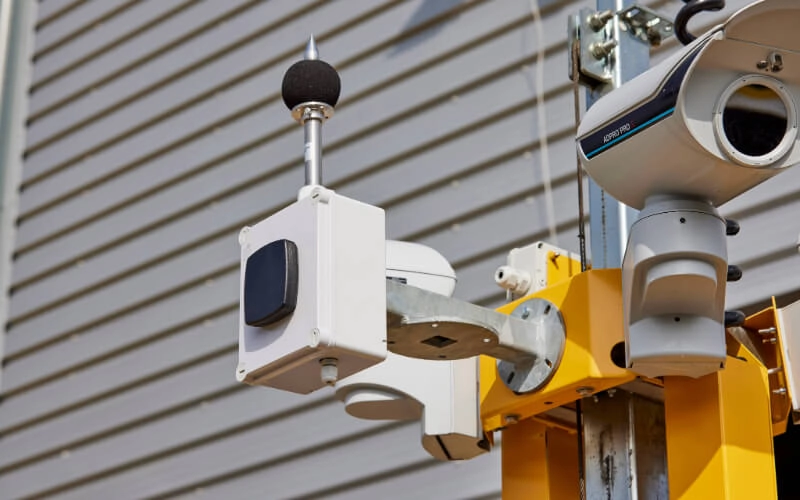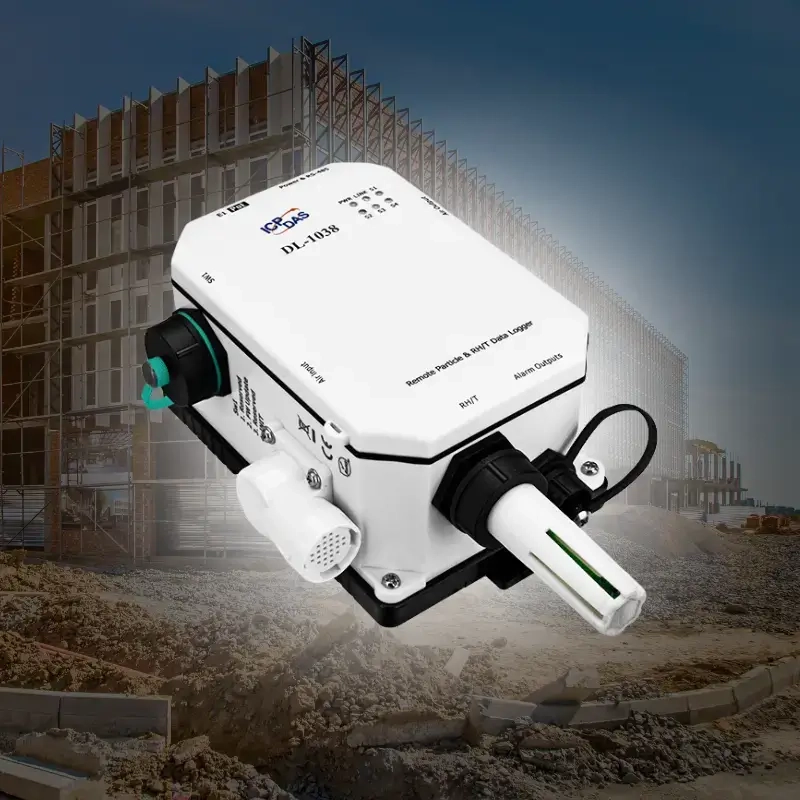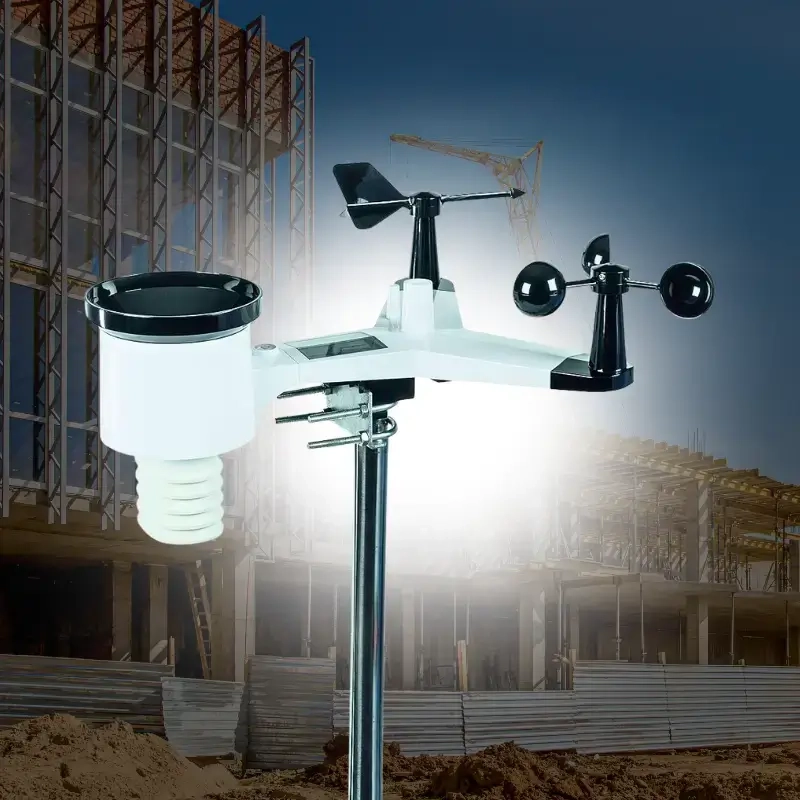No matter the industry, most site or building managers and owners will now likely be faced with the expectation of monitoring site conditions due to the environmental and public safety risks related to the overproduction of dust, gas, noise and vibration levels.
However, other additional benefits of monitoring site conditions like a minimised risk of complaints and reducing project disruption has led to a growth in interest on using sensors.
As demand increases, we explore what site condition monitoring sensors are, the different types available and what industries can benefit from them.
What is a Site Condition Monitoring Sensor?
Site condition monitoring sensors are devices used to gather data regarding various environmental factors at a designated location.
From dust particles and CO2 to weather conditions and noise levels, these sensors aim to monitor and in some instances trigger in cases where set limits have been overridden.
There are various sensor types available depending on your business’ needs, however, all variants will gather data which can then be reviewed to identify any potential problems and inform future decisions.
This data can also be used in cases of complaints as evidence to protect your business from any financial penalties or work suspensions.
Why Are Site Condition Monitoring Sensors Important?
Site condition monitoring sensors are important in helping to understand and maintain the health, safety and integrity of both natural features and infrastructure within a specified location.
By providing real-time data on the monitored environmental condition, sensors can benefit in the following ways:
- Detect issues early - You can preset most sensors with a limit on the level a condition can reach which if exceeded will trigger an alarm. This helps detect issues early in which you can react to as necessary.
- Improve environmental and public safety - The overproduction of gas, particles, noise and vibration can all impact environmental and public safety. Sensors monitor this and help you maintain these conditions within a safe limit.
- Enhance environmental processes and policies - Most companies have their own environmental goals, therefore monitoring certain conditions can help inform you of your production levels and help shape any processes or policies you have in place.
- Refine decision-making - Real-time data from sensors provide valuable insight into the site conditions and allow you to cater maintenance that will ensure you remain both on track and within safety limits.
- Maintain positive community relationships - Exceeded limits on site conditions can lead to complaints from local residents which can damage relationships with your business. Sensors help keep conditions within safe levels and minimise the risk of complaints.
- Provide the capability of proactive maintenance - Maintaining site conditions at all times is challenging, but by using sensors you can remain proactive in your response. If production increases, you have the availability to view real-time data and respond before it exceeds those limits.
- Keep projects on schedule - Weather conditions can impact project statuses and in turn delay them. This delay can lead to penalties on your business, but if you have evidence to display the conditions and how this would have impacted the project, you could avoid this.
Without site condition monitoring sensors you could face risks of financial penalties, legal repercussions, loss of future contracts, damaged reputation and project delays, all of which could be disastrous to your business.
However, to ensure you receive the wealth of benefits from using site condition monitoring sensors, you need to understand what sensor type you require for your site, building or property.

The Different Types of Site Condition Monitoring Sensors
There are four main site condition monitoring sensors, in which each of them can provide real-time insights into key elements on your specified location:
Gas and Particulate Sensor
Designed to track air quality, a gas and particulate sensor detects key pollutants such as, CO2 and dust, often whilst measuring temperature and humidity levels.
The overproduction of such matters can place the safety of both the public and environment in severe danger hence why Local Authorities will often set limits on production levels.
Sensors will help simplify the monitoring of this and provide oversight on trends appearing, allowing you to adjust maintenance as needed and react promptly.
What Industries Would Benefit From This?
- Construction Sites
- Industrial Facilities
- Commercial Buildings
- Schools & Universities
- Public Transport Hubs
For example, a school will most likely have gas and/or particulate matter that if safety limits are exceeded could place staff, students and visitors at risk.
By utilising a gas and particulate sensor, this can monitor for any increased levels of such matter which could indicate to the school of any new leaks that could have arisen somewhere on site.

Weather Station
For some businesses, the weather can have an extremely negative impact on their operational functionality and success.
Weather stations or sensors tend to be able to monitor the following weather types:
- Humidity
- Wind speed and direction
- Rainfall
- UV levels
- Solar radiation
Designed to monitor hot and cold weather changes, the aim is to provide real-time insight into the daily conditions faced, allowing maintenance plans to be adjusted to avoid any knock-on impacts from this.
Unlike other sensors, weather cannot be changed to suit your business needs, so the important feature of the weather station is the evidential gathering and risk management it allows you to have in protecting the general public and any employees.
What Industries Would Benefit From This?
- Construction Sites
- Farming & Agriculture
- Hospitals & Healthcare
- Wind & Solar Farms
- Transportation & Logistics
For example, for wind and solar farms, their energy production relies on a high amount of sun and wind. Without this, they are unlikely to produce much energy.
Weather stations can provide the daily insight required on how the weather will impact the success of these farms, helping to predict energy production if you wish to do so.

Audio Sensor
Mostly designed for construction sites, audio sensors help monitor and regulate noise levels for environmental and community considerations.
Every audio sensor will detect different decibel levels, however, all sensors will utilise a microphone to measure this.
Noise complaints can be costly to your business if found in breach of legal limits. Consequences can range from financial penalties to work suspensions, and will also likely lead to poor relationships with residents and visitors in the surrounding area.
Also, high noise levels have been linked to wildlife being negatively impacted by this, so audio sensors help to minimise this risk.
What Industries Would Benefit From This?
- Residential Construction Sites
- Demolition Sites
- Quarries
- Excavation Sites
- Industrial & Civil Engineering Sites
For example, you may have a construction project based in an urban location with multiple occupied offices based nearby.
Audio sensors can be used to benefit your construction site in various ways here. From providing oversight on daily noise levels and ensuring you remain within the safety limits to providing evidence when formal complaints have been made to avoid fines.
Vibration Monitoring
Excessive vibration levels can be extremely damaging to any nearby structures, lead to increased complaints, damage the natural environment and cause costly investigations and delays.
Vibration monitoring sensors detect and measure movement which will then be monitored for any excessive vibration.
This device allows for early identification of any potential issues and implement preventative measures prior to any damage being caused.
What Industries Would Benefit From This?
- Piling Operations
- Demolition Projects
- Excavation Work
- Urban Construction Sites
- Sensitive Infrastructure Protection
For example, during demolition projects, there is a high likelihood for increased vibration levels that could impact nearby buildings.
Through the use of vibration monitoring sensors, they can monitor these levels and provide you with real-time oversight to help prevent damage to any surrounding buildings.
Keep Your Site Secure and Environmentally Safe
Save on the suppliers and bolt-on your security solutions with one of our site condition monitoring sensors.
We offer all four main sensor types designed for sensitive and high-risk locations which allow you to gain real-time insight into your site, building or property’s conditions to ensure you upkeep both environmental and public safety.
With live alerts and threshold warnings, you can pre-set noise levels, dust limits, vibration thresholds or air quality parameters that if exceeded will send an instant notification in which you can react appropriately before they escalate.
Backed by our fully-managed security services, you will also have remote access to live monitor and review recorded footage to assess the conditions visually too, if relevant. This can be completed on any device at any location.
All our site condition monitoring sensors generate reports to support Section 61 compliance, ESG reporting and local authority updates. This keeps your teams, clients and partners informed with clear, accurate data.
Interested in bolting on one of our site condition monitoring sensors to your security solution or upgrading your full surveillance system?



